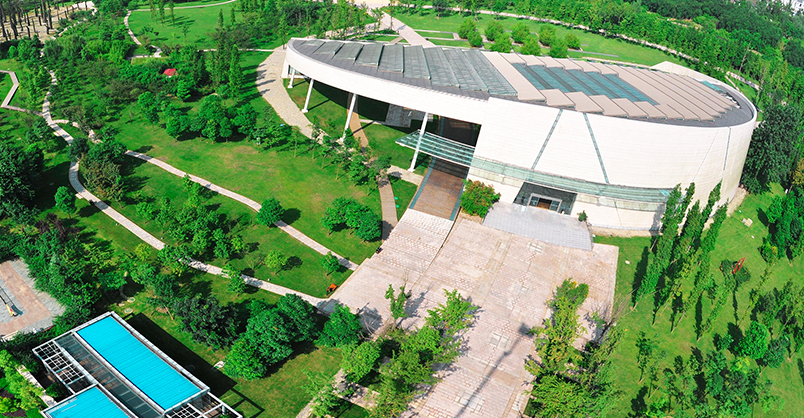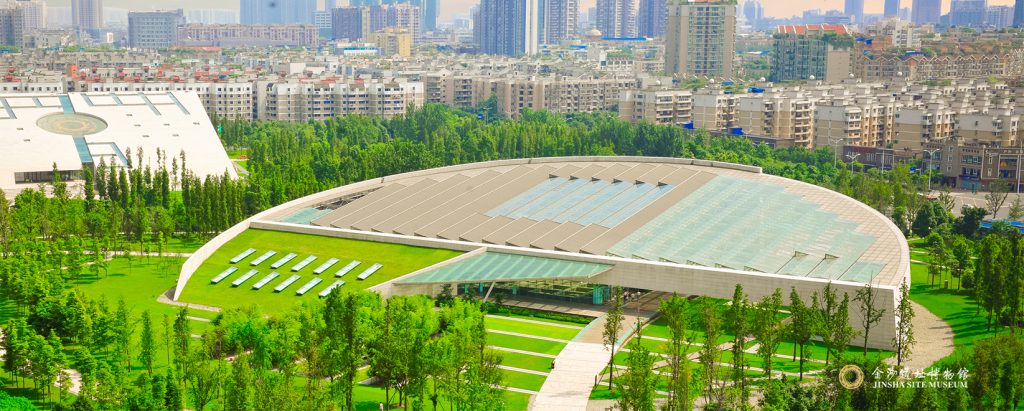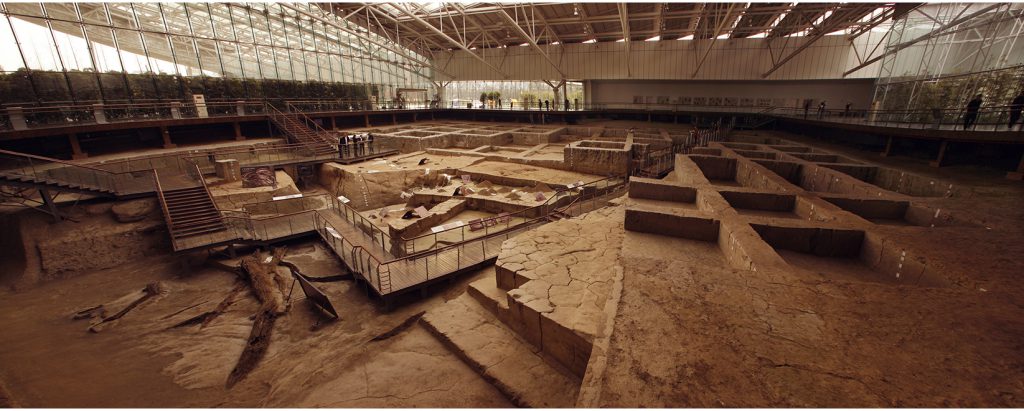Relics Hall of Jinsha Site
- 2019/5/17
- Visit
- Comments Off on Relics Hall of Jinsha Site

The semicircular Relics Hall spans 63m at a height of 19m and covers a total building area of 7,588m2. A continuous spatial change is formed when the extending and mild arch appearance gradually transits to and mixes with the pure and fresh outdoor landscape. Inside the hall, a large-space column-free structure is adopted to ensure a complete sacrificial site, and the large-span steel structure is to minimize the impact of buildings on the cultural relics. Sustainable building design in consideration of cultural relics protection and ecological protection has created favorable conditions for archaeological excavation and preservation of cultural relics.
The Relics Hall houses the main part of excavation site of the large sacrifice venue in Jinsha Site, the only best preserved one of its kind in the Shang and Zhou Dynasties in China at present. Displayed as it was, the excavation site and the tree root relics have maintained the integrity and authentication of those historical relics while shocking every visitor coming for it. Here, visitors have a chance to see how grand the worshipping ceremony was 3,000 years ago and how archaeological excavation was performed on the site at a short distance.
The sacrificial area, located at the east part of the Site, with coverage of about 15,000 square meters, is a specified location for religious worship activities of ancient Shu kingdom along the river specially in the period of late Shang Dynasty to early Spring and Autumn Period (about 1200-650 B.C.). It is distributed along the south river bank. Probably, the ancient Shu people held sacrificial ceremony on the river bank, and then buried the ritual artifacts on the river rapids after the ceremony. Until early Spring and Autumn Period, within 500 years’ activities of burying, the river bank were fully filled. Meanwhile, with the shift of the political center, the holy land of Jinsha was gradually not used.
Until now, more than 60 sacrificial remains have been found in the Relics Hall and unearthed precious cultural relics over 6,000 pieces including gold wares, bronze articles, jade objects, stone, bone or horn implements, lacquered woods, as well as tons of elephant tusks, and a large amount of boar tusks, deer horns and earthenware.
According to those sites, it is concluded that the sacrifice in Jinsha was developed through three stages, between which, or in which, significant difference was formed in respect of objects.
The 1st stage was dominated by elephant tusks and stone implements, supplemented by some earthenware, lacquered woods and a small number of jade objects, which should belong to the 2nd or 3rd phase of Yinxu (around 1200 B.C.).
In the 2nd stage, while the elephant tusks were still in use massively, stone implements and lacquered woods were gradually replaced by jade objects, bronze articles and gold wares, which should belong to the 3rd or 4th phase of Yinxu and to the middle Western Zhou Dynasty (around 1100-850 B.C.).
In the 3rd stage, a sharp increase in boar tusks, deer horns, beautiful stones and earthenware, and a sharp decrease in jade objects, bronze articles and gold wares favored in the previous stage, were found. The period they belonged to should be the late Western Zhou Dynasty to the early Spring and Autumn Period (around 850 to 650 B.C.).







Recent Comments